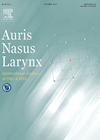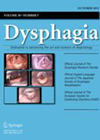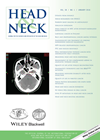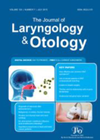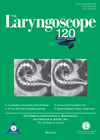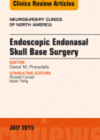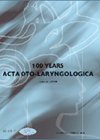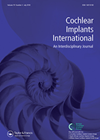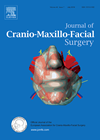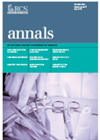
Journal Reviews
Prognostic factors for myringoplasty
This retrospective study looked at the factors that were associated with a higher success rate for tympanic membrane perforation closure. The authors looked at 247 procedures. They compared the results of temporalis fascia versus tragal cartilage. The cartilage grafts had...
Risk factors for post laryngectomy fistula
This is a meta-analysis looking at the postoperative pharyngocutaneous fistula rates following total laryngectomy. The authors ended up with 34 studies with about 2500 patients. The most striking finding was that preoperative radiotherapy was a significant risk factor as well...
Changes in swallowing function after thyroidectomy
Evaluation of functional impact following thyroidectomy tends to be focused on voice quality. The aim of this study was to document early (seven days postoperatively) and late changes (60 days postop) in swallowing function after thyroidectomy. A preoperative naso-endoscopic evaluation...
Risk factors for TORS treatment failure in HPV-related oropharyngeal cancers
HPV-related squamous cell cancers are an increasingly common cause of malignancy in the oropharynx. There is evidence that these cancers are associated with a significantly improved overall survival compared to conventional HPV-negative tumours. The optimal treatment for such cancers is...
Influence of atmospheric conditions on post tonsillectomy secondary haemorrhage
Haemostasis in epistaxis and a good few other conditions outside the field of otolaryngology seem to be affected by the weather. It is generally thought that dry and hot environment encourages secondary post tonsillectomy haemorrhage. Variations in water vapour pressure,...
Surgical voice restoration after laryngopharyngectomy
Voice restoration is one of the key rehabilitative steps after laryngectomy or total laryngopharyngectomy (TLP). Patients who undergo TLP require reconstruction – increasingly commonly with microvascular free flaps. Despite their advantages in terms of fistula rates and swallowing outcomes, these...
The increasingly favourable outcomes from endoscopic endonasal approaches for the management of pituitary adenomas
Historically, pituitary tumours have been surgically managed with an open, transcranial approach. Although this approach still has its merits in large intracranial adenomas, technological advancement has allowed smaller tumours to be debulked via a transseptal microscopic technique. These days, the...
Which is worse – unilateral or bilateral tinnitus?
Few studies have analysed subjective aspects of tinnitus or the association between clinical characteristics and the directionality of tinnitus. The study subjects comprised 207 patients who presented with tinnitus over two years and underwent tinnitus-related physical examinations and tinnitograms (includes...
Do the modern multiple microphones with beamforming facility really help implantees?
In this study the authors aimed to assess the benefit beamforming multiple microphones provide to implantees. Speech reception thresholds were assessed in different situations; fixed masking noise from eight loudspeakers around the subject at 0°, ±45°, ±90°, ±135°, and 180°...
Postop follow up of oral squamous cell carcinoma: a new protocol
Oral and oropharyngeal cancers together are the sixth most common malignancy in the world, with an increasing incidence of oral squamous cell carcinoma (OSCC). The recurrence rate of OSCC is reported to be approximately 10-26%. About two-thirds of all recurrent...
Long-term outcomes after (adeno) tonsillectomy
Patient-reported outcome measures (PROMs) are used increasingly to fill an ‘evidence gap’ where healthcare rationing threatens particular treatments. Tonsillectomy is a long-established and effective treatment for recurrent tonsillitis and obstructive sleep apnoea (OSA) in children. The T-14 outcome measure examines...
‘FOX’ – a new software programme in cochlear implant fitting for audiologists
Taking into account the complex parameters involved in cochlear implant fitting, it appears that the procedure is becoming more and more difficult and variable across cochlear implant centres. For this reason, a software programme called FOX was designed attempting to...

